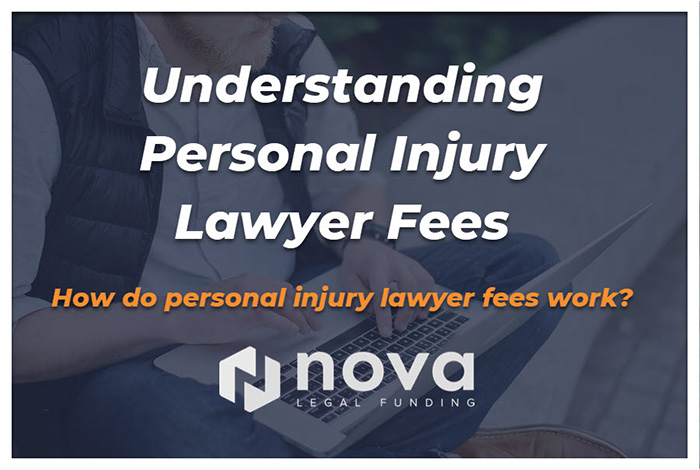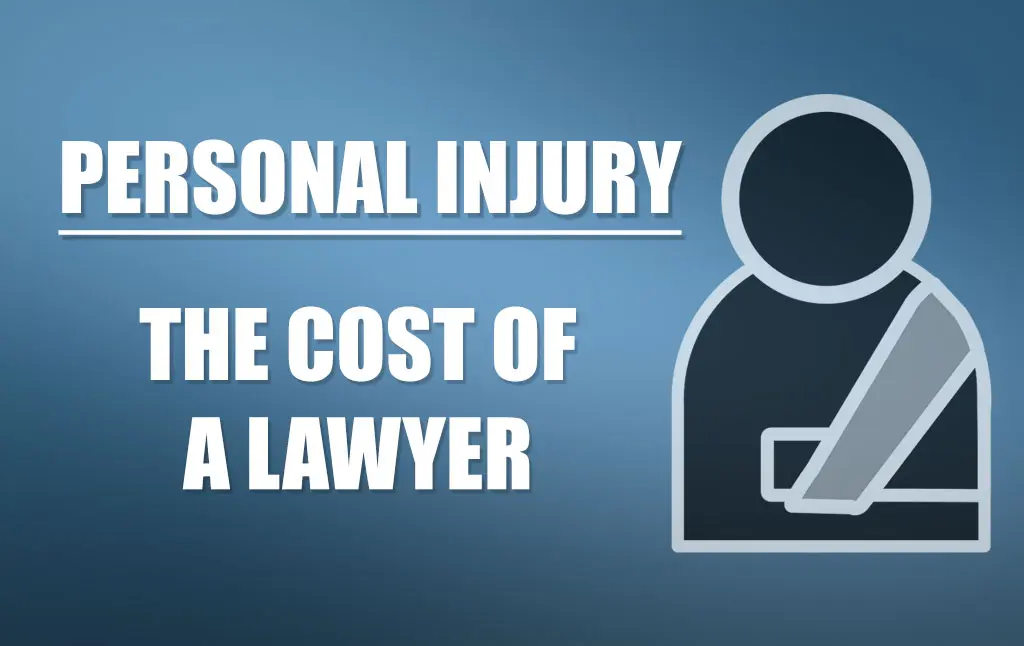Personal injury lawyer fees are a crucial aspect of pursuing a claim after an accident or injury. Understanding the various fee structures, potential hidden costs, and negotiation strategies is essential for anyone considering legal action. This guide provides a comprehensive overview of these complexities, empowering you to make informed decisions throughout the legal process.
From contingency fees, where lawyers receive a percentage of your settlement, to hourly rates and hybrid models, the financial arrangements can vary significantly. This variance is influenced by factors such as the lawyer’s experience, the case’s complexity, the severity of your injuries, and the anticipated settlement amount. Navigating these variables requires careful consideration and clear communication with your legal counsel.
Factors Influencing Personal Injury Lawyer Fees

The cost of hiring a personal injury lawyer can vary significantly depending on several interconnected factors. Understanding these factors is crucial for clients to make informed decisions and to have realistic expectations about the overall legal expenses. This section will explore the key elements that contribute to the final fee structure.
Case Complexity and Severity of Injuries, Personal injury lawyer fees
The complexity of a personal injury case is a major determinant of legal fees. Cases involving multiple parties, extensive medical records, complex liability issues, or significant property damage tend to require more time and resources from the lawyer, thus increasing the cost. Similarly, the severity of the injuries sustained directly impacts the legal fees. Severe injuries, such as traumatic brain injuries or spinal cord damage, often lead to prolonged litigation, extensive medical evaluations, and higher potential damages, justifying higher legal fees. For example, a simple car accident with minor injuries might involve a relatively straightforward process, whereas a catastrophic injury case might require years of legal work, necessitating a higher fee.
Lawyer’s Experience and Reputation
An attorney’s experience and reputation play a significant role in determining their fees. Highly experienced lawyers with a proven track record of success in personal injury cases often command higher fees due to their expertise and knowledge. Their extensive experience allows them to navigate complex legal procedures more efficiently and effectively, increasing their chances of securing a favorable outcome. Similarly, lawyers with a strong reputation for winning significant settlements or verdicts often charge higher fees, reflecting their perceived value and higher demand. The perception of a higher likelihood of success can justify the higher cost for clients.
Geographic Location
The geographic location of the law firm also impacts legal fees. Law firms in major metropolitan areas with higher costs of living and operating expenses tend to charge higher fees than those in smaller towns or rural areas. This difference reflects the overall market conditions and the cost of maintaining a practice in a specific location. A lawyer operating in a high-cost city like New York City, for instance, will likely have higher overhead than one in a smaller city.
Contingency Fee Arrangements and Expected Settlement Amount
Many personal injury lawyers work on a contingency fee basis. This means they receive a percentage of the final settlement or judgment awarded to the client. The percentage typically ranges from 25% to 40%, but it can vary based on the specifics of the case and the lawyer’s agreement with the client. While the client doesn’t pay an hourly rate, the contingency fee is still affected by the expected settlement amount. A case with a large potential settlement will generally attract a higher percentage fee than a case with a smaller potential settlement, reflecting the higher risk and effort involved.
Comparison of Fees Across Different Case Types
The following table provides a general comparison of the potential range of fees for different types of personal injury cases. Remember that these are estimates, and the actual fees can vary greatly based on the factors discussed above.
| Case Type | Fee Range (Percentage of Settlement) | Factors Influencing Fee | Example Scenario |
|---|---|---|---|
| Car Accident | 25-40% | Severity of injuries, liability issues, property damage | Minor injuries: Lower end of range; Severe injuries and multiple parties: Higher end of range |
| Medical Malpractice | 30-45% | Complexity of medical records, expert witness fees, length of litigation | Clear-cut malpractice resulting in minor injury: Lower end; Complex case with severe injury and multiple defendants: Higher end |
| Slip and Fall | 25-35% | Severity of injuries, property owner’s liability, witness testimony | Minor injury, clear liability: Lower end; Severe injury, contested liability: Higher end |
| Product Liability | 30-40% | Complexity of product design, evidence of defect, expert witness testimony | Simple defect causing minor injury: Lower end; Complex defect causing serious injury and requiring extensive expert analysis: Higher end |
Negotiating Lawyer Fees

Negotiating attorney fees for personal injury cases can significantly impact your financial recovery. While many lawyers operate on a contingency fee basis, understanding the nuances of fee structures and negotiation strategies empowers clients to make informed decisions and potentially reduce their overall legal costs. Effective communication and a clear understanding of your case’s value are key to a successful negotiation.
Negotiating lower fees involves a multifaceted approach. It’s crucial to remember that a lawyer’s expertise and experience warrant fair compensation, but finding a balance between quality representation and affordability is achievable.
Strategies for Negotiating Lower Fees
Several strategies can be employed to negotiate lower attorney fees. One approach involves comparing fee structures from multiple law firms specializing in personal injury. This allows for a comparative analysis, identifying lawyers who offer competitive rates without compromising their experience or reputation. Another strategy focuses on clearly articulating your financial constraints to the lawyer. Openly discussing your budget limitations encourages the lawyer to explore flexible payment options, such as reduced hourly rates or modified contingency fee percentages. Finally, negotiating a reduced contingency fee percentage can be effective, particularly if your case presents a high probability of success and a substantial settlement. This demonstrates your understanding of the case’s potential and willingness to share in the risk and reward.
Questions to Ask During Initial Consultations
Asking specific questions about fees during the initial consultation is vital for setting realistic expectations. Clients should inquire about the lawyer’s fee structure, including whether it’s hourly, contingency-based, or a hybrid model. Clarifying what expenses are included in the fees (e.g., court costs, expert witness fees) is also crucial. It’s also beneficial to ask about the lawyer’s experience with similar cases and their success rate, which helps in evaluating the potential return on investment. Finally, asking for a detailed breakdown of potential costs associated with litigation, such as expert witness fees, filing fees, and other potential expenses, provides a comprehensive understanding of the financial commitment.
Reviewing and Understanding Contract Terms
Before signing any contract with a personal injury lawyer, thorough review of all terms and conditions is paramount. This includes carefully examining the fee structure, payment schedule, and the lawyer’s responsibilities. Understanding the contingency fee percentage, if applicable, and what constitutes “costs” that you may be responsible for is critical. Any clauses related to termination of the agreement and the allocation of costs in case of termination should be clearly understood. If any aspect of the contract is unclear or raises concerns, seeking clarification from the lawyer or a trusted legal advisor is advisable before signing. Don’t hesitate to negotiate terms you don’t understand or are uncomfortable with.
Implications of Contingency Fee Arrangements
Contingency fee arrangements, where the lawyer’s fee is a percentage of the settlement or judgment awarded, are common in personal injury cases. However, it’s crucial to understand the implications. The percentage charged will vary depending on the lawyer and the specifics of the case. While this model eliminates upfront costs, the lawyer’s fee is deducted from your final settlement or judgment, meaning your net recovery will be lower. Moreover, the lawyer’s incentive is to maximize the settlement, but this doesn’t guarantee a successful outcome. Clients should carefully weigh the pros and cons of this arrangement and fully understand how the contingency fee is calculated and what expenses are covered or not covered under the agreement. For example, a 33% contingency fee on a $100,000 settlement would result in a $33,000 attorney fee, leaving the client with $67,000. It is important to have a clear understanding of how this percentage is applied and any additional costs that may be deducted.
Successfully navigating the financial landscape of personal injury cases requires proactive planning and informed decision-making. By understanding the different fee structures, potential hidden costs, and negotiation strategies, you can better protect your financial interests while pursuing your claim. Remember to thoroughly review all contracts, ask clarifying questions, and seek clarity on any ambiguities to ensure a transparent and equitable arrangement with your legal representative.
Understanding personal injury lawyer fees can be complex, varying based on factors like the case’s complexity and the lawyer’s experience. For those in the Washington D.C. area seeking legal representation, finding a qualified attorney is crucial; consider researching options like those available through a firm specializing in personal injury lawyer dc services. Ultimately, the cost of legal representation will significantly influence the overall financial outcome of your personal injury claim.
Understanding personal injury lawyer fees can be complex, varying based on factors like the case’s complexity and the lawyer’s experience. If you’ve been injured in Myrtle Beach, seeking counsel from a qualified professional is crucial; consider consulting a myrtle beach personal injury lawyer to discuss your options and potential costs. Many lawyers work on a contingency basis, meaning fees are typically only due upon a successful settlement or verdict, mitigating upfront financial concerns.
Understanding personal injury lawyer fees is crucial before seeking legal representation. The cost structure can vary significantly depending on the specifics of your case and the lawyer’s fee agreement. For those in the Nashville area, a great resource to explore fee structures is a reputable nashville injury lawyer , as they can provide clarity on their pricing models.
Ultimately, thorough research into lawyer fees is vital for making informed decisions about your legal representation.




